The Nintendo Collectathon: A Genre of the Past
When we play a video game today, we often expect that we will have to collect some kind of object along the way. It could be something as simple as collecting enough points to meet a set limit required to beat a stage. It could also be as complicated as hunting across a giant world to hunt for a big number of one specific item to get an achievement. Whether it be a big or small part of the game, we have come to accept collection as an important element in our games. There was once a time where collection in video games, however, was not just an element of the game – it was the main point of the game. Players would enter different parts of the world and collect as many objects as they could in order to reach the end of the game. These games are unofficially referred to as collectathon games. This is a genre that was synonymous with the fifth generation of video game consoles (usually associated with Nintendo and the Nintendo 64) and was especially popular during the rise of 3D video games.
At the time, players and critics agreed that Nintendo collectathons were fun, absorbing, and overall fantastic games. Edge Magazine, in their retrospective of Super Mario 64, talked about how 3D platformers really shined with their design, stating that, “that final quality [of genius] is something you can hardly put into words: it’s the expression of beautiful, funny and wicked ideas that could only ever exist in a three-dimensional game space…it’s the unfettered wonder of one of videogames’ finest minds discovering that the world has three dimensions, coming up with something you’d never have thought of, and – with typically gleeful generosity – allowing you to discover it as if you had”. With the new design possibilities that 3D games were capable of, developers were able to hide more objects around the different worlds they make. Nintendo, when they were making Mario 64, realized that they could take idea of hiding objects for players to seek out, and make entire games out of the concept.
And it makes sense. Gamers have always loved finding hidden items in their video games. Objects that the developers hid throughout the game as a secret waiting to be discovered are seen as very desirable by gamers. We feel that when we find a hidden goodie, especially if it gives us some kind of special reward, we’re in essence really beating the game in the way it was intended to be played. So a game based entirely on finding objects that the developers hid seems like a no-brainer. And for a time, collectathons were very successful. But as the newer consoles came out, the collectathon genre started to die out, and has since become a relic of video game past. Ask a gamer nowadays about collectathons, and you’ll either get responses of love for the genre or a shaming of the games for being boring. So how did this genre come to be, and how did it get to be so popular and then soon afterwards die out?
Super Mario 64: The Beginning of an Era
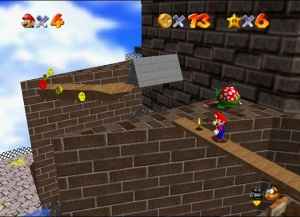
The game that undoubtedly pioneered the collectathon genre is Super Mario 64. Mario’s first 3D game introduced the idea of collecting a certain number of items as the main objective to the massive gaming crowd. The game also laid down various standards that later collectathons would adopt and improve upon. One example of this is the idea of having to collect one kind of object in order to receive a bigger reward. This is shown with the red coin missions. All through the worlds, there would be eight red coins hidden for the player to find and collect. Once the player finds all eight of the coins in a level, they are able to collect the more important collectable, a Power Star. This idea of collecting-to-collect is not just limited to red coins – in order to collect all of the Stars in the game, the player would also have to collect three different caps, but two of them can only be collected after you collect a boss key which you can only get to when you collect eight Stars.
On paper, it seems like a lot. But part of what made Super Mario 64 so good in the eyes of the players is that, despite there being quite of bit of collecting you need to do, the game never felt overwhelming. Most of the objectives you have to complete in order to collect the items you need are simple. They could just be you simply reaching the part of the world where the Star was located. Sometimes you have to play small little minigames in order to claim your reward. Other times, you have to beat a boss. But no matter what you are doing, it would usually be pretty clear to the player what he would have to do. Whenever you jump into a world, for example, the title of the Star gives you a clue as to what you would be doing, and if you knew the world well, you would be able to head over to the Star immediately without having to explore. But that’s not to say the exploration was completely ignored – there were still Stars that require a fair amount of digging around the levels to find. The creators made sure to include a fair balance of obvious Stars that are out in the open, and Stars that require the player to look around every nook and cranny to find it.
Another common theme of collectathons that was revolutionized with Super Mario 64 was the open-ended design of the game. In previous games in the series, Mario’s only goal was to get from point A to point B. The player would achieve this by moving in a straight line and following it to the end. Once you passed a certain part of the level, you would most likely not touch it again unless you restarted the level. This linear design worked well for 2D games, but with the fluent 3D movement possible on the Nintendo 64, the developers knew that they could make something more impressive. As a result, the worlds were completely open for the player to explore. You weren’t bound to just achieve your current goal – you could go to wherever you wanted to, most of the time. Though there are some exceptions, a player could achieve most of the Stars in a world in whichever order they desired. The open-world nature of Super Mario 64 would carry over to collectathons, and would be expanded upon by future games in the genre.
1997 – 2001: Rareware and the Golden Age of Collectathons
Super Mario 64 was critically acclaimed upon release and was considered a huge commercial success, becoming the best selling Nintendo 64 game of all time. Gamers were astounded at the revolutionary 3D gameplay, and the game to this day consistently ranks as one of the greatest games of all time by the critics and the gaming public alike. Nintendo wasn’t the only one designing collectathons, however. Several other companies had tried their hands at capitalizing on Super Mario 64‘s success. When these companies realized that Nintendo had seemingly stumbled upon a winning formula, they were ready to copy the formula and hopefully copy their success. At the forefront of this movement to copy Nintendo’s success was a company called Rareware, now known as Rare Ltd, or Rare. Rare was, at the time, a third-party developer for Nintendo, who had already made a name for themselves for the Donkey Kong Country series, as well as Killer Instinct, on the Super Nintendo Entertainment System. And after releasing Goldeneye 007 to rave reviews, Rare’s next project was a collectathon game.
The game in question was Banjo-Kazooie, which had started life as a Super Nintendo game codenamed “Dream”. Kazooie was a game that involved the player taking control of a bear named Banjo and his loud-mouthed bird named Kazooie, who go on an adventure to save Banjo’s sister, Tooty, from the evil witch Gruntilda. The game took many of the same ideas from Super Mario 64, and upgraded them. For example, like in Super Mario 64, you could grab the main collectables – in this case, jigsaw pieces called Jiggies – in any order you wanted to as long as you could reach it. But instead of the game kicking you out of the world when you grabbed a Jiggy, Banjo-Kazooie allowed the player to continue traveling around the world to collect more items. Also, Banjo-Kazooie added many other items you needed – eggs for ammunition, red feathers for flying, gold feathers for temporary invincibility, and the list goes on. Banjo-Kazooie was released to critical praise and commercial success, and Rare continued to be on the top of their game.
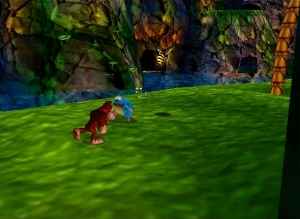
The next year, they released Donkey Kong 64 (DK64), a continuation of the Donkey Kong Country series. Like Mario, Donkey Kong would be making a transition from linear 2D platforming to open-world 3D platforming. The game was considerably bigger than Banjo-Kazooie – 201 main collectable objects (Golden Bananas, in this case) as opposed to 100 in Kazooie. When you factor in the other numerous collectables of the game, DK64 becomes a massive collectathon. In fact, the game was recognized as having the most collectables in any video game in the gaming edition of Guinness Book of World Records. It was because of the massive amount of content in the game that the game had to be bundled with the Expansion Pak just to have the game run (and also because the Expansion Pak was the only solution to a bug in the game that caused the game to randomly crash). DK64 was also well-received at the time of its release, but critics had noticed its similarities to previous collectathons.
Rareware would then release Banjo-Tooie in 2000 as a sequel to Kazooie. Though the game was not as big as DK64 was, the game was still very big compared to its prequel. The worlds were bigger than ever, and the game featured multiple places where you could travel between different parts of the giant world Rareware had created. But oddly enough, the amount of collectables was reduced in the sequel. There were 90 Jiggies to collect instead of 100, and the other collectables that you had to collect individually in Kazooie, like eggs and feathers, were now bundled together in groups to make it convenient. This made the big worlds Rare had created seem more empty than Kazooie and DK64. Despite the emptier level design, Tooie was also praised by critics upon its release. However, critics were still noticing that the collectathons Rare were creating were all basically the same game in different colored packages.
The collectathon craze wasn’t limited to Rare, however. Other developers were making 3D platform games that focused on collecting as many objects as possible in order to beat the game. For example, Crystal Dynamics were looking to create a sequel to their 1994 sidescroller, Gex. This sequel would become a 3D collectathon released for both the Nintendo 64 and the Playstation, and would be known as Gex: Enter the Gecko. The game took place inside the many worlds of television channels, and it parodied many TV shows and genres of the time. There were also games that brought 3D platformers back to their 2D roots by having the goal of a 3D platformer be to reach the end of the stage, while still collecting objects along the way; such games included Glover and Bomberman Hero. While these games were all successful, they never reached either the critical or commercial success of Mario 64 or the Rare games. Critics were arguing that the games were simply retreading on old ideas left in the wake from previous games.
Other games, like Crash Bandicoot and Spyro the Dragon were collectathons made to create a mascot for Sony and the Playstation. These were popular with Playstation owners, as they were able to experience the collectathon genre without having to get a Nintendo 64. Spyro was more of a traditional collectathon; players would travel throughout the different worlds in order to free the trapped dragons scattered without (similar to the Power Stars). They would also need to collect treasure which acted like points. But Crash was unique in that it was a 3D platforming game that was both a collectathon and a linear platformer. The player would control Crash as he moved forward through the level, breaking boxes and collection gems and crystals. Both of these games would generate many sequels that would spawn numerous consoles, but gamers and critics generally agree that the series were best in their Playstation eras.
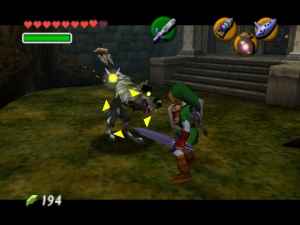
And while collectathons were prevalent, other types of games still had collection in its focus. While Nintendo was developing Mario 64, they were also developing the latest game in the Zelda series, Ocarina of Time. Zelda has been a series where collecting items was one of its highlights. All the way back from the NES titles to even the most current Zelda games, while you were advancing through dungeons, you needed to collect several key items in order to progress to the end of the game. Ocarina was still, in many ways, a linear platformer. When you entered a dungeon, you still had to get from the beginning of the dungeon to the end, but you wouldn’t be able to do this unless you collect all the necessary items in the dungeon itself. Ocarina is a good example of Nintendo uses collection in their games to build a solid foundation for them to develop a fun game.
The Demise of Collectathons: 2001 – Now
When the next generation of video game consoles were released, gamers were excited to see what types of games developers would make. Capabilities for what video games could do were skyrocketing. Online gaming was beginning to shift from being exclusive to computer gaming as the consoles were being manufactured to have online capabilities. With this, multiplayer games were suddenly being put into a bigger focus. Online multiplayer was being paved as the way of the future – and single-player games had to compete with it. Even though many companies were still making single-player 3D platformer games, they suddenly had this new type of game to compete with. How would the collectathon genre survive the new wave of video game revolutions?
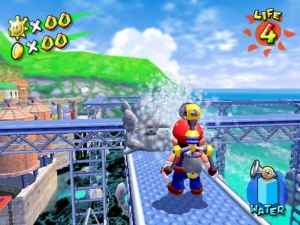
Unfortunately for collectathons, 3D platformers were starting to fall out of place in the video game world. Platformers weren’t as marketable as they were in the fifth-generation era, and the games being released weren’t matching either the critical or commercial success that they were before. Some companies did try to keep the platformer genre alive, like Nintendo, who released their follow-up to Mario 64, Super Mario Sunshine, on the Gamecube in 2002, in an effort to keep the collectathon formula that they perfected alive. But not everything was going great for the 3D platformers. Companies that were making platformers started to broaden their horizons into other territories to keep up with market trends. And the 3D platformers that were being made were not reaching the critical or commercial success as they were in their heyday. Another reason collectathons were losing ground was the fact that developers thought they were difficult to design well enough to be considered good. So the genre, unfortunately, faded into obscurity.
Of course, Nintendo would keep the successful formula it had created going well after collectathons left their prime. In 2007, they released Super Mario Galaxy, which brought the collectathon genre into outer space and introduced gravity and space-travel gimmicks to keep the genre fresh. The game received critical acclaim, but it unfortunately didn’t cause a widespread revival in the collectathon genre. Nor did this happen with the sequel to Galaxy released in 2010, or the recently released 3D platformers Super Mario 3D Land/World. Nintendo created the collectathon genre way back with Mario 64, and they stuck with it as long as they could. But nothing could surge the genre back into mainstream success, or at least the mainstream success that it did in the late 90’s.
But not all is lost. Collectathons are still recognized by many gamers who played the games as kids as being very nostalgic. Whether or not they think the games are still good in their eyes, they still have many memories about those collectathons. In the gaming community, collectathons are very commonly played on YouTube as Let’s Plays or walkthroughs. Many prolific YouTube gaming icons, like JonTron and Chuggaconroy, highly rank classic collectathons games likes Kazooie and DK64 as being some of their favorite games. And currently in development by the company Gears for Breakfast is the game A Hat in Time, which is a collectathon game inspired by the classic Nintendo 64 games. So while the genre may still be a relic of gaming past, it is still remembered fondly as an important part of the history of video games, and undoubtedly, the games will continue to leave their marks on games of the future.
What do you think? Leave a comment.




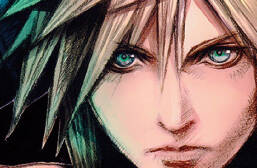
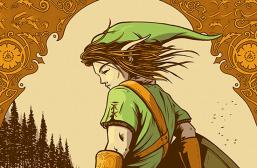

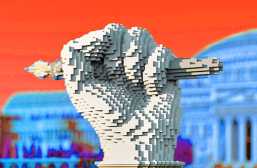
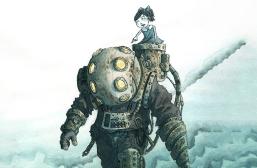


Good work on your article. You certainly give a detailed history of Nintendo’s evolution within the gaming industry.
Thanks very much for the feedback! This was definitely a major point in Nintendo’s history; again, with 3D games suddenly becoming a possibility, there were all kinds of things video game developers could do. In my opinion this saga is one of Nintendo’s greatest moments.
Actually games are still collect archons if you think about it , RPGs and fps have objectives to complete and rare weapons and stuff to COLLECT.
All of these types of games are gone because all gamers want are FPS games.
An unfortunate truth. Even though I kinda like the FPS genre I do agree it’s been over-saturated by mediocrity nowadays.
I would maybe go as far to say that “hardcore” gamers want FPS games, but I think there is still a market for collectathon games. Nostalgia is a powerful, powerful marketing techniques; maybe it just has yet to be found?
Of course you would need a new to way approach these games.
I have fond memories towards collect-a-thons because of the quality of its music and courses.
Oh yeah, the music in these games, especially Rare’s, is stuff I could listen to forever!
Definitely! Making sure the music is top-notch and that the courses are visually appealing is so important to collectathons because of the extra amount of time spent in one location.
Jak and Daxter, Super Mario Sunshine, and Psychonauts! Speak no more!
I hear these games are difficult to develop. In 3D platformers and especially open world collectathons, there is a good deal of extra planning involved that isn’t as prevalent in 2D games. Developers have to anticipate the character approaching obstacles from all different directions instead of just one.
I’ve heard that too from developers. And it makes sense. There’s also the point of originality – how do you create challenges that are fun and unique? That was one of the reasons 3D platformers fell out to begin with; gamers thought that it was all the same thing.
Nintendo has the talent to make the good ones!
I agree that they do! But I’m worried that they might run the genre into the ground simply by repeating the same formula over and over. Maybe this is why many developers shy away from doing collectathons – they don’t want to be called Nintendo ripoffs.
I usually dont play video games, but the nintendo mario ones are some of the most interesting and fun games I’ve played.
Would you argue for/against achievements being the modern day “collectathon” feature? I know many people (myself excluded, however) that play and replay videos games simply to unlock achievements.
Ultimately, it’s up to the developers, but I’d say that it could be. I’m one of those people you described as playing through games just to round up achievements. Again, though, it’s really based on how the developers implement achievements. If they focus on story-based achievements, then it really doesn’t feel like collection.
Moreover, the collections of older games tended to be directly relevant to the story–you collected stars so that Mario could progress to the next world, or feathers to make that next battle in Banjo-Kazooie a little easier–but weren’t restricted to a linear progression to do so. Now, in Call of Duty, for example, you can either collect main storyline achievements, which are mandatory in the order and placement and approach of them, or irrelevant “do this X times, do this in this special way” achievements. Best case scenario may be that achievements are not a hindrance to progression, whereas collections were directly relevant to progression. In my opinion, anyway.
Really great assessment of the ecology of the collectathon, rich analysis, and a solid walkthrough on the changes according to brands of console! The preoccupation of “collecting things” within video game objectives seems to point to broader socio-economic values associated with consumerism. And The redundant procedural aspects of this animated genre seem to suggest that the player may simply have a loyalty to a franchise or feels more secure from familiar platform styles.
*more secure with
I hadn’t even thought about the socio-economic aspect of the idea of collectathons, and now that I think about it, it feels like a missed opportunity. Especially since I could’ve talked about it in terms of how the marketability of 3D platformers was declining during the rise of online gaming. Oh well.
I love your exploration of the collectathon in your article. I certainly believe that Nintendo had a very powerful thing behind it and – although the world is now obsessed with FPS – I feel that there is enough of a fan-base to bring this aspect of gaming back. Games like Banjo Kazooie, or (on the Sony side) Crash Bandicoot could benefit from a comeback.
Collect-a-thons aren’t dead, there are still games coming out where you have to collect 15 of this or 20 of that to get to the next set of levels, it just isn’t as prominent in a lot of mainstream games.
I have nothing against collectables in games as long as they actually have some sort of effect on the game.
Collectathons just seem like a really cheap way to give the player a goal without actually coming up with different objectives. Just “go find all these things until you can go to a new area and find more things.”
I know this is an old comment, but you don’t quite understand the genre. Games like the 3D Marios and Jak and Daxter have a ton of collectibles, but that’s not where the fun comes from. It comes from a platforming challenge, a minigame, a boss battle. The objectives are also varied. Let’s use Mario 64 as an example. In Bob Omb Battlefield, you have seven objectives: beating King Bob-Omb, racing Koopa the Quick, getting to the floating island, collecting 8 red coins, a Wing Cap challenge and beating Chain Chomp. A good collectathon has the collectibles behind fun gameplay and different objectives.
Oh, I forgot to mention the 100 coin star.
The Nintendo 64 was powerful enough to pioneer “open world” game design.
Ratchet & Clank series is my fav in this genre.
Some of my favorite games were collectathons, like Banjo Kazooie, but it was more that I loved them in spite of it than because of it. Though Rare took it to kind of excessive levels.
Aside from Mario 64 (my favorite game), I absolutely loved Banjo-Kazooie, Conker’s Bad Fur Day, and Donkey Kong 64.
Beloved Mario! I too am a fan of the 3D Mario collectathon games. It seems so many games are now first person shooters and there is a lost area for the games of old. I’m glad Nintendo is still making them though for the faithful fans!
I think you provided a fantastic overview of the genre of the collectathon. A question I’d love your thoughts on is: how could the collectathon evolved with the games industry to keep itself as a core gameplay design? Those games used to be epic, but I don’t know if I would immediately say that they’re no longer so great because they’re outdated. I’d love to hear your thoughts.
I think that the collectathon was basically always meant to surge in popularity and then start to die out. I don’t think that collectathons make for good AAA titles, and if a game genre can’t survive on AAA titles, it won’t survive long. I understand that the collectathon, or rather collecting items is video games, is still prevalent, but I predict they won’t surge back to their popularity in the N64 days.
I actually never really enjoyed collectathons. The only one I’ve ever managed to finish is Jak and Daxter, and I only played it because it was Naughty Dog. And even though I do enjoy it, it still gets tedious and drags on easily. I was really glad when they switched to a mission/objective based system in Jak 2.
I like collecting things.
Pikmin is great! This was a strategy game, but it had you collecting lots of things as the goal.
Never actually played Pikmin. But I always wanted to. I should get on that, like, now.
It’s funny, I never thought the genre/style died out. I thought I just got too old and busy for collectathons (the days of 100-percenting a game mostly behind me). I do wonder, why have collectathon platformers become a rarity while fetch quests still seem a big part of RPGs? (Or am I overestimating the prevalence of fetch quests?)
The problem with a lot of modern games incorporating collectables is that, in some way, these games don’t have environments built to facilitate natural exploration. Even if the game is as butt-crazy ridiculous as Just Cause 2, the landscape is still designed to be somewhat realistic, so you don’t zip about the Panaun jungles to wind up meeting a giant snowman, except for that one snowman. And when your landscape resembles real-world examples, you get a lot of flat space.
I’m really happy and proud that Nintendo was finally able to do 4 player multiplayer in a 3D Mario. They had been attempting it ever since Super Mario 64 and finally it is reality. However I will admit I was really hoping for a return to the Star Collecting formula.
I want the revival of the genre soon.
You got your wish granted, there are a lot of collectathon on the market now… be it remakes or new IP.
They don’t get the success they were used to… but still…
The collect-a-thon is alive and well. I’m often guilty of achievement/trophy hunting by looking for inanimate objects in order to hear that fulfilling ding. I’d say the collect-a-thon has been made into an art form with Assassin’s Creed. There’s armor pieces, random things to collect(flags and feathers anyone?), sync points to go to, and the pattern repeats with each game.
I would argue that the collection of hidden items, levels, and bonus rounds has been a major characteristic of Nintendo as a brand from the beginning. They essentially created the roots for the games considered collect-a-thons from the very beginning. It became more apparent with Donkey Kong Country where one of the goals is to find all of the bananas dropped along the way after they were stolen from Donkey Kong’s home. This same idea, though different and less obvious, was used in the Super Mario World for Super Nintendo as well. Let us not forget Pokemon red, blue, and yellow which came out in the 90s for game boy. The whole concept was collecting in order to win. I could go on and further back.
I agree that the peak for collect-a-thon games came with the introduction of the Nintendo 64, but collection of items as a key component to a game and game world has been with us since early on. I doubt it will ever fully be lost, either.
I feel you had a good analysis here, and I enjoyed reading your article. It is interesting to see how the gaming developers have evolved in just a handful of years. Personally, I would not mind seeing a few more collectathon games come out, especially for the Wii U, since the Game Pad could lend itself to more strategies on how to find things. Captain Toad comes to mind, but I’m hoping for another collectathon Mario game.
Collectathon culture seems to have transcended 3D platformers by evolving into things such as achievements and trophies documented by the PS3, Xbox, and Steam. Players can complete goals sometimes out of the game’s context to receive a similar feeling of accomplishment to that of finding a Jiggy.
Nintendo has done one thing that is great over the years: reconditioning their assets. They have been successful at creating new ways to look at their characters and the world they reside, and that is what is really keeping them afloat. Luckily, they are starting to branch out into other areas and genres while sticking to what they know.
This article is so interesting, cool topic! Loved it!
Man, this was a great article. Brought me down memory lane.
This was a really fun article to read! I hope that collectathons start to make a reappearance because, in my opinion, they were much more fun than the first-person shooters that seem to have taken over today.
this really brings back the memories
That was a great read! You seemed really knowledgeable about the topic which only made it better. Great job!
I just miss my new Mario Collect-a-Thon!
This was an awesome article. Thankfully, I still have a Nintendo 64, and I will be playing some of these games very soon. You did a great job of giving us a detailed summary of collectathon history. Thank you!
With so many games in the industry leaning towards linear shooters, I always find it refreshing that Nintendo continues to keep collectathons alive and well. Super Mario 64 was a favorite of mine growing up, and I still have fond memories of it, and their more recent efforts like the Super Mario Galaxy 1 and 2 or Super Mario 3D Land/World just feel more rewarding than any achievement on Xbox or PlayStation. Great article!
Only thing I have to say is the length is a problem more casual readers will nit want to invest the time to read
Interesting read, though I can suggest several more collectathon platformers that have yet to be mentioned. Ty the Tasmanian Tiger, Jak & Daxter: The Precursor’s Legacy, Vexx and (to a slightly lesser extent) Billy Hatcher and the Giant Egg.
This was a very interesting article and made me miss my old nintendo games! All you see now a days are shooting games, which, granted, are still extremely well done. When you look at a game series like Jak & Daxter (one of my favorite trilogies of all time) you can see the dramatic transition from the first to the second. Not only did it go from collecting orbs and power cells (Collectathon) to simply completing missions and shooting enemies, but it also went from being rated E to T and included more mature content. And yet, both games are still amazing! Collectathons do make me nostalgic, but just because game styles are evolving does not mean that they are getting worse.
Rare veterans are quick to retrospectively admit that DK64 was almost ruined by its collectibles. That being said, it’s still a personal favourite. I think that Banjo Kazooie balances collection and adventure far better.
I wonder if in addition, we over saturated in bad platformers: I remember a lot of licensed collectathon platformers from disney that simply were not fun to play.
Another thought is if Ratchet and Clank streamlined the collectathon platformer to its basic principles: it has optional collectibles such as Golden Bolts, but most of the items make you more powerful, rather than. This provides some flexibility: those who want to get everything, can invest the time, but evreyone gets a short-term reward . Getting enough items to progress does not feed into that short-term reward cycle.
Most platform games are indie games taking inspiration from the platformers of the NES era. Maybe there will be a future day where the collectathon is resurrected?
You got your wish granted 🙂
These are some of the games I have the fondest memories growing up with. Even now as an adult, it’s enjoyable to revisit them and play them almost mindlessly. They hold up well for games that aren’t necessarily driven by a plot. Great article!
Those were certainly the days. Banjo-Kazooie was a masterpiece in this regard. Hell, even Paper Mario was. I’ll never forget those experiences.
I doubt you’ll see this as it’s an old article, but I think you glossed over the sixth generation of consoles too quickly. The collect-a-thon genre was very much alive then, especially on the PS2 during the heyday of the brilliant Ratchet and Clank and Jak & Daxter series. In fact, I’d say Jak 2 and 3 increased the scope of the genre even more by incorporating the fully open world design from GTA.
Brilliant article nonetheless, brought back some very fond memories of playing Rare games on the N64. Hard to believe these days that they were once one of the kings of gaming.
For some reason, I have never really heard of or grouped all of these games into this category/genre of collectathons before. However, it has become very clear that this is a huge theme through many of my favorite games from my childhood. Looks like I would like to see some new collectathons myself.
he turn-based rpg genre is a bit over-represented here
also Donkey Kong Country should have been way higher (28th place as it is), ign even says it saved the console and then they put 2 Tetris games over it?
personal taste transpired a bit too much in this
Ragerds:Moses Brodin